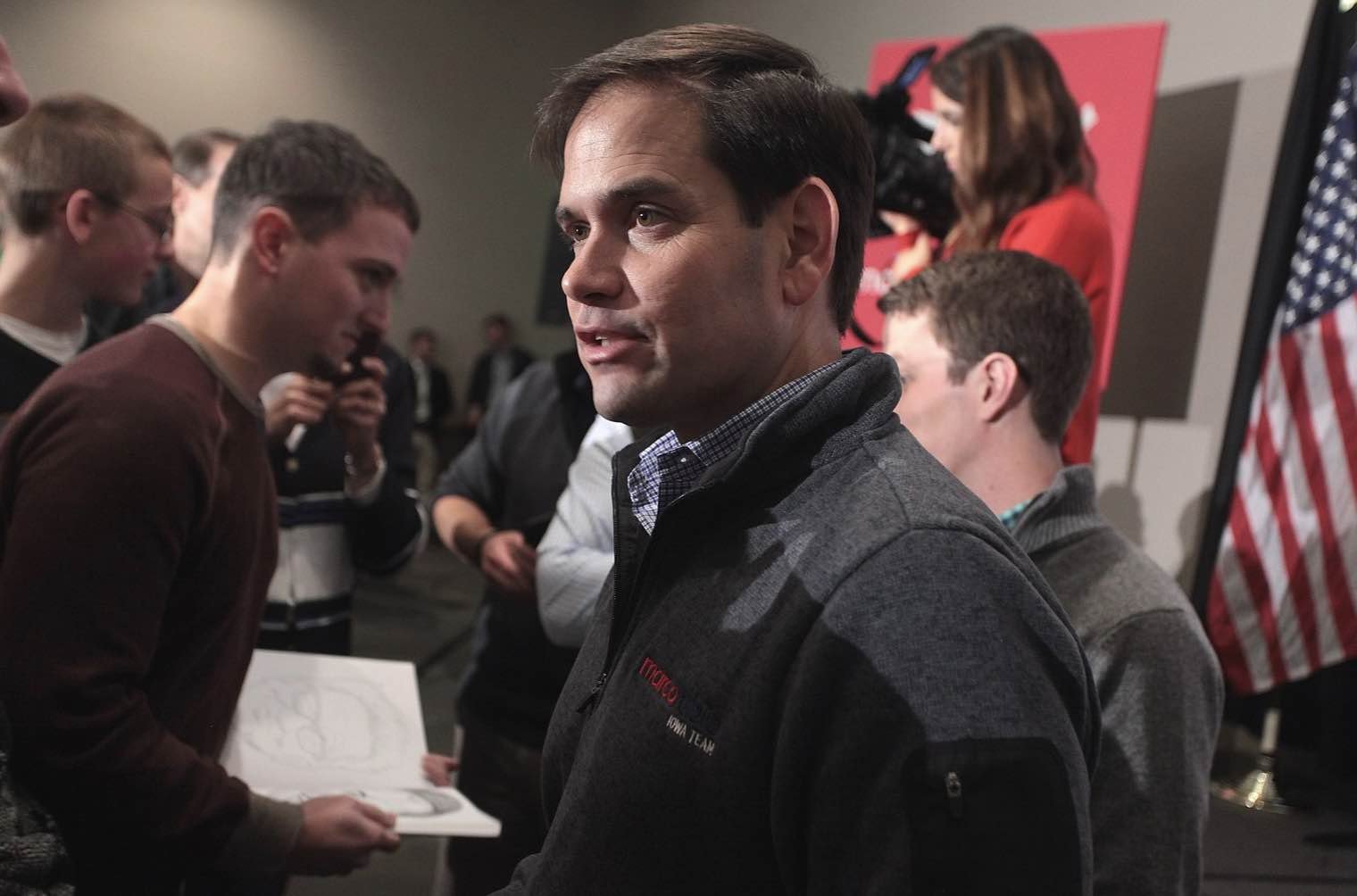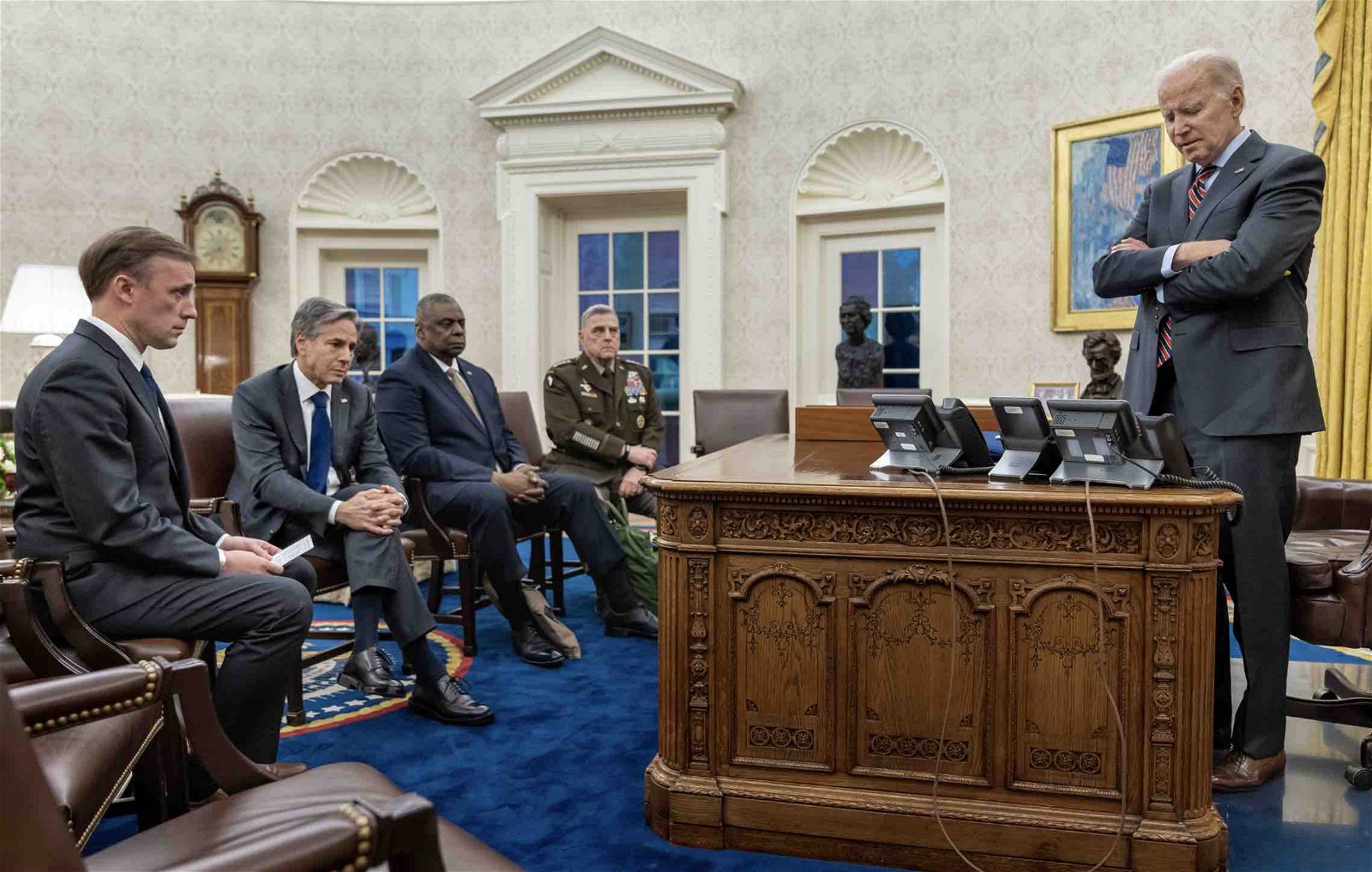A series of incidents involving the downing of several objects over North America that the Biden Administration refuses to identify but suggests had been commercial balloons has renewed debate over whether the United States is being forthcoming about data it collects on aerial objects that remain unidentified.
Speaking at the Pentagon on Wednesday, Deputy Pentagon Press Secretary Sabrina Singh told reporters that the unidentified objects were most likely to have been commercial balloons that the U.S. shot down using AIM-9X Sidewinder missiles, projectiles with an individual price tag of around $400,000.
“[T]hese were not UFOs,” Singh clarified on Wednesday. “We are tracking them as objects and I know that there have been characteristics of one of them that appears to be like a balloon, but these were commercial, we believe.”
“We do not believe these to be any type of foreign entity,” Singh added, “in terms of a UFO.”
Singh also said the U.S. had “not been able to recover all the debris from when these were shot down,” although to date, no indication that any debris had been recovered has been provided by the Pentagon.
While some questions may remain over whether any debris associated with the objects was recovered by the U.S., the Pentagon has made at least one thing abundantly clear: it has no plans to release what little data it is suspected to have successfully collected on the objects.
On Friday, The Debrief reported that the Pentagon confirmed it has no plans to release videos or other imagery of the objects collected with camera systems on board the fighter aircraft that approached the objects moments before they were shot down, despite such imagery being referenced by U.S. officials during similar recent exchanges with members of the media.
When asked on February 17 about whether the U.S. would “release the cockpit videos” obtained during the interceptions of the three objects, National Security Council Coordinator for Strategic Communications John Kirby advised one reporter that he would “refer you to DOD on that” regarding any decisions about “releasing the imagery.”
In addition to the warranted concerns by many Americans over whether the U.S. had been trigger-happy in its response to the detection of the objects—all of which were shot down in the aftermath of a suspected Chinese surveillance balloon’s transit through U.S. airspace in open view of the public—some are also raising concerns over whether the Pentagon and the Biden Administration’s positions on the recent incidents highlights another pressing concern for Americans: excessive secrecy.


Rich Hoffman, a member of the board of directors of the Scientific Coalition for UAP Studies, a nonprofit group that studies potentially anomalous aerospace phenomena, says his organization is not concerned with the information the DoD collects about conventional technologies suspected of being used by foreign adversaries for surveillance purposes, but that more transparency is needed on other objects the U.S. may occasionally detect in its efforts to mitigate those threats.
“SCU is not interested in balloon photos/videos because we study unidentified aerial phenomena,” Hoffman told The Debrief, “not objects that are clearly identifiable as balloons, aircraft, or any other conventional objects that the military chooses to investigate and or defend against.”
Hoffman says the recent conflation of the suspected balloon shoot-downs over North America with the ongoing debate over whether there are unknown objects present in U.S. airspace lends further confusion to an already complex issue.
“UAP are not balloons,” Hoffman told The Debrief, “and the government must use clear terminology to ensure that they differentiate UAP from Identified Objects.”
“The government and media are confusing the public,” Hoffman says.
Hoffman says the public “has a right to be provided answers to what is clearly going on in the skies,” which includes being provided “cleaned and cleared videos or photos” of all phenomena, “regardless of being a UAP or an Identified Object such as a balloon.”
During a classified briefing that occurred shortly after the incidents, members of the U.S. Senate were provided information on what U.S. intelligence agencies had learned about the objects recently downed over the U.S. and Canada. Led by Assistant Secretary of Defense for Homeland Defense and Hemispheric Affairs Melissa G. Dalton and Director of Operations for the Joint Chiefs of Staff Lt. Gen. Douglas A. Sims II, Gen. Glen D VanHerck, commander for North American Aerospace Defense Command (NORAD) and U.S. Northern Command, the classified briefing also featured Morgan Muir, deputy director of national intelligence, and Dr. Sean Kirkpatrick, director of the Pentagon’s All-domain Anomaly Resolution Office (AARO).
Speaking with reporters after the briefing, Senator Marco Rubio, R-Florida, argued that “95% percent of what was being discussed in that room today could be made public without compromising the security of this country.”
“We know what the spy balloon from China was, so put that one aside,” Rubio added. “The other three instances as they are described both publicly, and in there, are not new. I mean, we’ve heard the exact same description in hundreds of cases.”


Rubio was alluding to the ongoing collection of information by AARO, which builds on a data set collected by its predecessor, the Unidentified Aerial Phenomena Task Force, that formed the basis of an intelligence assessment published on the website of the Office of the Director of National Intelligence (ODNI) in 2021 that offered a preliminary evaluation of UAP data the DoD had collected.
A second report issued by the ODNI earlier this year, although more conservatively worded than the previous assessment, nonetheless conveyed that some incidents involving UAP remain perplexing to the DoD, citing a total of 510 incidents currently in its database.
“Since its establishment in July 2022, AARO has formulated and started to leverage a robust analytic process against identified UAP reporting,” the report’s authors state, adding that AARO’s findings will be made available to Congress.
“AARO’s initial analysis and characterization of the 366 newly-identified reports, informed by a multi-agency process, judged more than half as exhibiting unremarkable characteristics,” the report added, noting 26 objects that AARO believes represent drones or similar technologies, as well as 163 representing “balloon or balloon-like entities,” a characterization that has been the recipient of renewed focus since the recent incidents over North America involving what could only be surmised as being similar instances involving unidentified flying balloon-like objects.
However, not all of the objects AARO is currently evaluating have been characterized as familiar or mundane objects.
“Some of these uncharacterized UAP appear to have demonstrated unusual flight characteristics or performance capabilities and require further analysis,” the ODNI report’s authors add.
“ODNI and AARO are committed to the responsible sharing of UAP findings with interagency partners,” the report’s authors state in the document, adding that “other stakeholders, congressional oversight, international partners, and the public” would be informed about its findings.
“I think at a minimum our Director of National Intelligence should go in front of the American people and explain what we know and what we don’t know without divulging any classified information,” said Senator John Kennedy, R-Louisiana, speaking to reporters following the classified briefing held on Capitol Hill earlier this month about what he viewed as excessive secrecy surrounding the topic.
Notably, Director of National Intelligence Avril Haines recently warned that excessive secrecy is “an urgent challenge to solve” and that “classification and inability to share information can undermine the critical democratic objectives” while delivering keynote remarks on classified information and democracy earlier this year at an event at the Lyndon B. Johnson Presidential Library in Austin, Texas.


After the classified briefing on Capitol Hill earlier this month, Senator Rubio expressed concerns that the Biden Administration’s plans to establish a new UFO Task Force under the direction of the President’s National Security Advisor also has the potential to further distance any information the U.S. collects on what is operating in our skies from public awareness, along with adding additional clutter around the already congested airspace surrounding the UAP topic.
“That’s why an agency was created. An interagency task force was created to study all of this from a scientific perspective,” Rubio told reporters after the briefing. “And so my concern now is that the Department of Defense is not sharing that information with those scientists,” he added.
Rich Hoffman told The Debrief that information about UAP—including photos and videos—that are not suspected of representing objects like balloons, foreign technologies, or anything that might represent a challenge to U.S. national security should be made available to the public so that scientific organizations like SCU can assist in efforts toward evaluating them.
“SCU is seeking to assist the government in the study of the UAP and have capable scientists, engineers, and other professionals studying the UAP in an effort to get answers and publish reports to inform the general public,” Hoffman says.
Fundamentally, if any information is being collected about UAP that points to something other than technologies suspected of belonging to U.S. adversaries or other security challenges, Hoffman and the SCU say American citizens deserve to know.
“This is called transparency,” Hoffman told The Debrief, “and our government should be transparent unless to do so clearly and rightly jeopardizes national security to provide these types of images.”
Micah Hanks is the Editor-in-Chief and Co-Founder of The Debrief. He can be reached by email at micah@thedebrief.org. Follow his work at micahhanks.com and on Twitter: @MicahHanks.

